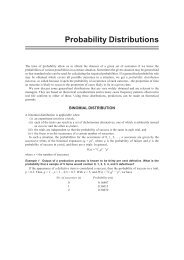International-Business-Dr-R-Chandran-E-book
International-Business-Dr-R-Chandran-E-book
International-Business-Dr-R-Chandran-E-book
You also want an ePaper? Increase the reach of your titles
YUMPU automatically turns print PDFs into web optimized ePapers that Google loves.
233<br />
<strong>International</strong> <strong>Business</strong>- <strong>Dr</strong>. R. <strong>Chandran</strong><br />
Consider country A whose factor price line AA is tangential to the<br />
isoquant YY at the point E. Since the isoquant YY represents one unit of<br />
goods ‘Y’, we find that in country A, one unit of goods ‘Y’ can be produced<br />
with OR of capital and OS of labour, the factor price ration line shows the<br />
rate at which one factor can be exchanged for the other. Thus on the factor<br />
price line AA, with points A and E being on the same line, OS of labour is<br />
worth RA of capital and OR of capital is worth SA of labour. As we have<br />
seen, the cost of producing one unit of goods ‘Y’ is equal to OR of capital<br />
plus OS of labour. It is found that OS of labour, we find that the cost of<br />
producing one unit of goods ‘Y’ is equal to OR of labour SA of labour<br />
which has been substituted for OR of capital which is equal to OA of labour.<br />
By the same reasoning, the cost of producing one unit of goods ‘X’ in<br />
country A is OK of capital plus KA of capital (because OL of labour is<br />
worth KA of capital) and hence equal to OA of capital. In terms of labour<br />
alone, this cost is equal to OL of labour plus LA of labour (because OK of<br />
capital is worth LA of labour) and hence equals OA of labour.<br />
Now, let us examine the cost of producing one unit of both types of<br />
goods in country B. Since country B is labour rich and therefore labour is<br />
relatively cheaper here, the factor price ratio line BB is flatter than AA. This<br />
price line BB is tangential to the isoquant YY at the point F. This shows that<br />
the cost of producing one unit of ‘X’ in country B in terms of capital alone.<br />
To find this we draw a price line CC parallel to and below the price line BB<br />
in such a way that it is tangential to the isoquant XX at point the H. The<br />
price line CC represents the same factor price ratio as the line BB as the two<br />
are parallel. At point H the cost of producing one unit of ‘X’ in country B is<br />
OM of capital plus ON of labour. Since on this price line CC, ON of labour<br />
corresponds to MC of capital, the price of one unit of ‘X’ is equal to OC of<br />
capital in country B. Thus, in country B the cost of producing one unit ‘Y’ is<br />
OB in terms of capital while for ‘X’ it is OC in capital alone. Hence in<br />
country B it is more expensive to produce ‘Y’ than to product ‘X’ in the<br />
same quantities as OV>OC.<br />
The above analysis shows that country B has a cost advantage in production<br />
of ‘X’ and it is relatively cheaper to produce ‘Y’ in country A. This fact<br />
establishes the Heckscher-Ohilin theory, that a country abundant in capita<br />
will export capital intensive goods and a country abundant in labour will<br />
export the labour intensive goods.<br />
One of the major drawbacks of this analysis is that it defines factor<br />
abundance in terms of factor prices. This is not free from flaws due to the<br />
fact that factor prices do not depend on abundance or scarcity of factor<br />
supplies alone, but they are also influenced by demand factors. It is<br />
Only for Private Circulation





